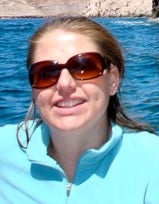By now, most people concerned with fisheries management in New England, and in fact many others across the country, are aware of the difficult situation unfolding around the Gulf of Maine (GOM) cod stock. For those who are not, a stock assessment completed late in 2011 drastically altered our perception of the stock from the last assessment completed in 2008, and suggests that the resource is in much worse shape than we previously thought.
Actually, in many ways the 2011 assessment tells a story similar to the 2008 assessment: Biomass reached all-time lows during the 1990s, but then approximately doubled by 2001. Thereafter, biomass dipped again to another low point in the mid-2000s, before climbing again toward the end of the 2000s.
The critical difference between the two assessments lies in the pace of rebuilding since the recent low in the mid-2000s. The 2008 assessment suggested that the population was increasing extremely rapidly, with growth of more than 200% from 2005 to 2007. In doing so, it had exceeded the overfishing threshold, and was well on its way toward the rebuilding target biomass that would produce the maximum sustainable yield on a continuing basis. Read More


